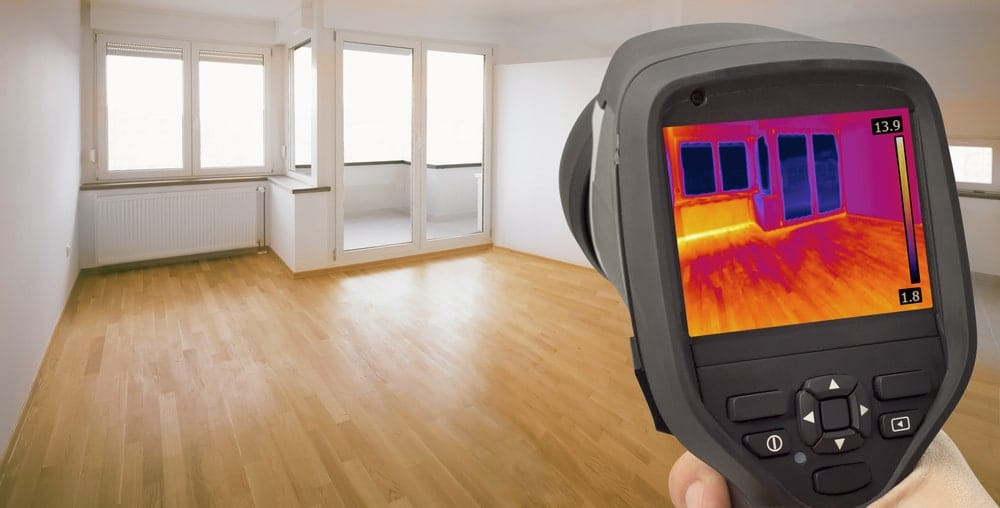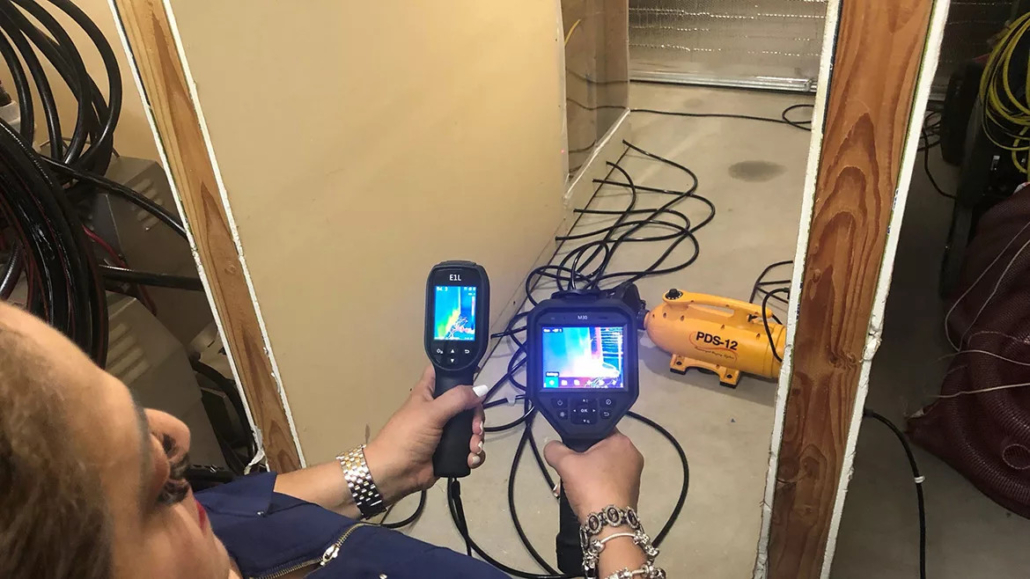Why does a restoration company use thermal imaging cameras during inspections in Portland, OR?
Restoration companies in Portland use thermal imaging cameras to quickly and non-destructively find problems that are invisible to the naked eye. This technology detects temperature differences on surfaces, allowing technicians to pinpoint hidden water intrusion, moisture pockets behind walls, and gaps in the home’s thermal barrier. In a climate like the Pacific Northwest, where persistent dampness can lead to mold and rot, this tool is essential for accurately diagnosing the full extent of damage without having to perform unnecessary demolition first.
The insights here are drawn from years of field experience in home restoration. This information explains not just what the technology does, but why it’s so effective for homeowners in this region. By understanding how professionals use these cameras, you can better appreciate the thoroughness required for a proper home inspection and restoration project.
The Science Behind Thermal Imaging in Home Restoration
At its heart, a thermal imaging camera, or infrared camera, doesn’t see moisture. It sees heat. Every object emits thermal energy, and these cameras create a visual map of those temperature patterns. In a restoration context, this is incredibly useful because wet materials change temperature differently than dry materials.
When water evaporates, it causes a cooling effect. A thermal camera can pick up on this subtle temperature drop on the surface of a wall, ceiling, or floor. The resulting image, called a thermogram, displays these cooler areas in different colors, typically blues and purples, which stand out against the warmer, drier surrounding areas shown in yellows and reds. This allows an inspector to immediately spot anomalies that suggest moisture is present where it shouldn’t be. It’s a powerful diagnostic step that guides the entire restoration process.
Key Applications for Thermal Cameras in Portland Homes
In the Portland area, with its rainy winters and generally damp conditions, thermal imaging proves its worth in several specific scenarios. It moves inspections from guesswork to data-driven assessments.

Locating Hidden Water Leaks
Chronic, slow leaks are common in the Pacific Northwest. Water can seep in around window frames, through flashing on the roof, or from cracks in the foundation. These leaks might not produce a visible stain for months, all while soaking wall materials and wooden structures. A thermal camera can trace the path of this moisture back to its source, letting technicians make a precise repair instead of a large, disruptive one.
- Bonus Tip: A good time to scan for roof leaks with a thermal camera is in the evening after a sunny day. The roof structure will cool down, but any wet spots will retain heat longer and show up clearly on the thermogram.
Assessing Water Damage Extent
After a pipe bursts or an appliance fails, the visible water is often just the tip of the iceberg. Water wicks up drywall, travels along floor joists, and seeps under baseboards. A thermal camera helps create a complete “moisture map” of the affected area. This ensures that all wet materials are identified for drying or removal. Failing to find all the saturated areas is a leading cause of lingering musty odors and secondary mold growth.
Finding Potential Mold Growth Areas
Mold needs moisture to grow. In fact, some common indoor molds can start colonizing within just 24 to 48 hours of a water event. By identifying hidden pockets of moisture with a thermal camera, restoration experts can pinpoint areas that are at high risk for mold contamination, even before the mold is visible or producing an odor. This proactive approach is key to maintaining healthy indoor air quality.
Visualizing the Data What Thermal Images Reveal
Interpreting thermograms correctly requires training and experience. A cold spot isn’t always water; it could be a metal stud, a draft, or a patch of thicker plaster. That’s why professionals use thermal imaging as a diagnostic tool, not a definitive answer. They use the images to guide them to suspicious areas, then use other tools like moisture meters to confirm the presence and quantity of water.
Here’s a simple comparison of what different inspection methods can find.
| Inspection Method | What It Can Detect | Limitations |
|---|---|---|
| Visual Inspection | Obvious stains, visible mold, pooling water, peeling paint. | Cannot see behind walls, under floors, or inside ceilings. Misses the early stages of a leak. |
| Thermal Imaging | Temperature anomalies indicating hidden moisture, gaps in thermal protection, air leaks, and overheating electrical circuits. | Requires a temperature difference to work effectively. It’s a diagnostic tool, not a moisture meter; findings need to be confirmed. |
While the images provide clear data, the quality of an inspection depends on more than just the technology itself.

Things to Consider Before Your Inspection
Hiring a company that uses thermal imaging is a great start, but there are a few things homeowners should know to get the most out of the inspection.
The Inspector’s Training is Key
The camera itself is just a piece of equipment. The real value is in the hands of a certified and experienced technician who knows how to interpret the images in the context of a building’s structure. They understand how different building materials affect thermal readings and can distinguish a real problem from a false positive. Ask about the inspector’s training and certifications.
Environmental Conditions Matter
For the best results, especially for energy audits, there needs to be a significant temperature difference between the inside and outside of the home, ideally at least 15 degrees Fahrenheit. This allows heat loss or air infiltration to show up more clearly.
- Bonus Tip: Before an energy-focused thermal inspection, it’s a good idea to close all windows and doors for several hours and turn off ceiling fans. This creates a stable indoor environment, making temperature anomalies easier to spot.
It’s Not X-Ray Vision
It’s a common misconception that thermal cameras can “see through walls.” They can’t. They only read the temperature of the wall’s surface. What they do is reveal the thermal patterns on that surface, which are influenced by what’s happening behind it. That’s why findings from a thermal camera must always be verified with a moisture meter to confirm that the temperature difference is actually caused by water. Research indicates that combining these two tools increases the accuracy of moisture detection by over 90%.
Common Questions About Thermal Imaging Inspections
Can a thermal camera see through walls?
No, it does not see through solid objects. It reads the surface temperature of the wall, which can be affected by moisture or missing heat-retaining material behind it. An experienced operator interprets these temperature differences to diagnose potential hidden issues.
How accurate is thermal imaging for finding leaks?
It is extremely accurate for detecting temperature variations that often signal a leak. However, it’s a diagnostic tool. A professional will always use a moisture meter to physically confirm the presence of water in the areas the camera flags as suspicious.
Is the technology safe for my family and pets?
Yes, thermal imaging is completely safe. The cameras are passive devices that simply detect the infrared energy that objects naturally emit. They do not produce any radiation or send out any signals, making them perfectly safe to use in an occupied home.
Can I just buy a cheap thermal camera for my phone?
While affordable thermal attachments for smartphones exist, they are not a substitute for a professional-grade inspection. Professional cameras offer much higher resolution and thermal sensitivity, allowing them to detect very subtle temperature differences. More importantly, a professional provides the expertise to correctly interpret the findings.
Does thermal imaging work in the summer?
Yes. For moisture detection, the evaporative cooling effect works year-round. For checking the home’s ability to hold temperature, an inspector can “cool load” the house with air conditioning to see where cool air is escaping, which works just as well as seeing where heat escapes in the winter.
How to Get a Professional Thermal Inspection
For homeowners in the Portland area who are concerned about hidden moisture, potential mold, or energy loss, the most reliable approach is to work with a qualified restoration company. Professionals like Prestige NW Restoration integrate advanced thermal imaging into their standard inspection process to ensure nothing is missed. Their certified technicians have the equipment and the expertise to accurately identify problems and create a detailed plan for correction. To discuss a situation or schedule an inspection, they can be reached at (360) 334-3624 or by emailing dispatch@prestige-nw.com.
Reviewer: Matthew Moore brings over 15 years of experience in residential renovation marketing. The review provided helped shape this content to better connect with homeowners seeking reliable, high-quality restoration and home improvement services.


Leave a Reply
Want to join the discussion?Feel free to contribute!